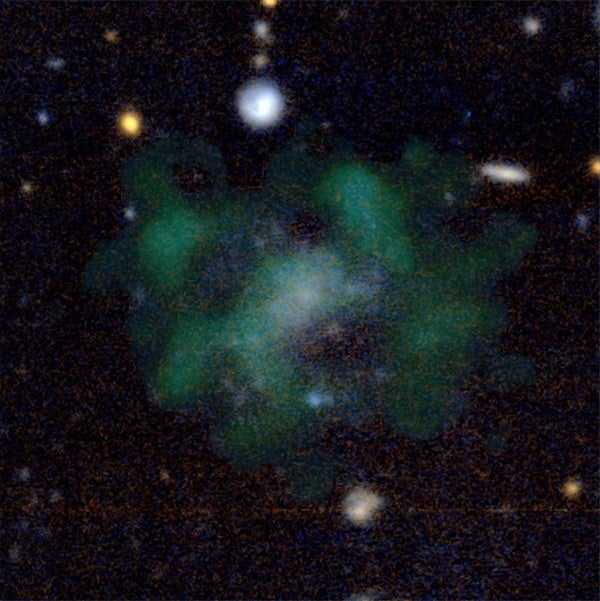The debate over galaxies without dark matter has returned. In 2018 and 2019, a series of studies lead by astronomer Pieter van Dokkum of Yale University made the case that two galaxies — NGC 1052-DF2 and NGC 1052-DF4 — are devoid of dark matter, an invisible substance that only gravitationally interacts with regular matter. Because every other well-studied galaxy seems to be chock-full of dark matter, the proposed dearth of it within DF2 and DF4 didn’t sit well with many astronomers. Now, although the debate is still not settled, new research lends credence to the dark-matter-less camp.
The new evidence comes from a study published Dec. 14 in Monthly Notices of the Royal Astronomical Society. In it, researchers examined a galaxy named AGC 114905, which, like DF2 and DF4, is an ultra-diffuse galaxy roughly the size of the Milky Way. However, AGC 114905 contains only around one-thousandth the number of stars as our home galaxy. To determine whether this galaxy hosts copious amounts of dark matter, the researchers spent 40 hours using the Very Large Array in New Mexico to measure how quickly neutral hydrogen gas orbits around the center of AGC 114905. If there is dark matter spread throughout, gas that’s far from the galaxy’s core should still rotate quickly. However, if there is no dark matter, the tenuously bound gas near the galaxy’s outskirts should move at a more leisurely pace.
The researchers found that the motions of the hydrogen gas within AGC 114905 can be completely explained if the galaxy only contains mass from the normal matter visible within it. And so far, the team hasn’t been able to identify a plausible explanation for why there is no dark matter.
Stay tuned, because this saga is surely far from over.










